Table of Contents
About the Author
About the Technical Reviewers
Acknowledgments
Foreword
Introduction
Chapter 1: Basic Concepts
Memory-Related Terms
The Static Allocation
The Register Machine
The Stack
The Stack Machine
The Pointer
The Heap
Manual Memory Management
Automatic Memory Management
Allocator, Mutator, and Collector
The Mutator
The Allocator
The Collector
Reference Counting
Tracking Collector
Mark Phase
Conservative Garbage Collector
Precise Garbage Collector
Collect Phase
Sweep
Compact
Small History
Summary
Rule 1 - Educate Yourself
Chapter 2: Low-Level Memory Management
Hardware
Memory
CPU
CPU Cache
Cache Hit and Miss
Data Locality
Cache Implementation
Data Alignment
Non-temporal Access
Prefetching
Hierarchical Cache
Multicore Hierarchical Cache
Operating System
Virtual Memory
Large Pages
Virtual Memory Fragmentation
General Memory Layout
Windows Memory Management
Windows Memory Layout
Linux Memory Management
Linux Memory Layout
Operating System Influence
NUMA and CPU Groups
Summary
Rule 2 - Random Access Should Be Avoided, Sequential Access Should Be Encouraged
Rule 3 - Improve Spatial and Temporal Data Locality
Rule 4 - Consume More Advanced Possibilities
Chapter 3: Memory Measurements
Measure Early
Overhead and Invasiveness
Sampling vs. Tracing
Call Tree
Objects Graphs
Statistics
Latency vs. Throughput
Memory Dumps, Tracing, Live Debugging
Windows Environment
Overview
VMMap
Performance Counters
Event Tracing for Windows
Windows Performance Toolkit
Windows Performance Recorder
Windows Performance Analyzer
Opening File and Configur ation
Generic Events
Region of Interests
Flame Charts
Stack Tags
Custom Graphs
Profiles
PerfView
Data Collection
Data Analysis
Memory Snapshots
ProcDump, DebugDiag
WinDbg
Disassemblers and Decompilers
BenchmarkDotNet
Commercial Tools
Visual Studio
Scitech .NET Memory Profiler
JetBrains DotMemory
RedGate ANTS Memory Profiler
Intel VTune Amplifier and AMD CodeAnalyst Performance Analyzer
Dynatrace and AppDynamics
Linux Environment
Overview
Perfcollect
Trace Compass
Opening File
CoreCLR.GC.collections
CoreCLR.threads.state
CoreCLR.GC.generations.ranges
The Final Results
Memory Dumps
Summary
Rule 5 - Measure GC Early
Chapter 4: .NET Fundamentals
.NET Versions
.NET Internals
Sample Program in Depth
Assemblies and Application Domains
Collectible Assemblies
Process Memory Regions
Scenario 4-1. How Big Is My Program in Memory?
Scenario 4-2. My Program’s Memory Usage Keeps Growing
Scenario 4-3. My Program’s Memory Usage Keeps Growing
Scenario 4-4. My Program’s Memory Usage Keeps Growing
Type System
Type Categories
Type Storage
Value Types
Value Types Storage
Structs
Structs in General
Structs Storage
Reference Types
Classes
Strings
String Interning
Scenario 4-5. My Program’s Memory Usage Is Too Big
Boxing and Unboxing
Passing by Reference
Pass-by-Reference Value-Type Instance
Pass-by-Reference Reference-Type Instance
Types Data Locality
Static Data
Static Fields
Static Data Internals
Summary
Structs
Classes
Rule 6 - Measure Your Program
Rule 7 - Do Not Assume There Is No Memory Leak
Rule 8 - Consider Using Struct
Rule 9 - Consider Using String Interning
Rule 10 - Avoid Boxing
Chapter 5: Memory Partitioning
Partitioning Strategies
Size Partitioning
Small Object Heap
Large Object Heap
Large Object Heap - Arrays of Doubles
Large Object Heap - Internal CLR Data
LargeHeapHandleTable
Lifetime Partitioning
Scenario 5-1. Is My Program Healthy? Generation Sizes in Time
Remembered Sets
Card Tables
Card Bundles
Physical Partitioning
Scenario 5-2. nopCommerce Memory Leak?
Scenario 5-3. Large Object Heap Waste?
Segments and Heap Anatomy
Segments Reuse
Summary
Rule 11 - Monitor Generation Sizes
Rule 12 - Avoid Unnecessary Heap References
Rule 13 - Monitor Segments Usage
Chapter 6: Memory Allocation
Allocation Introduction
Bump Pointer Allocation
Free-List Allocation
Creating New Object
Small Object Heap Allocation
Large Object Heap Allocation
Heap Balancing
OutOfMemoryException
Scenario 6-1. Out of Memory
Stack Allocation
Avoiding Allocations
Explicit Allocations of Reference Types
General Case - Consider Using Struct
Tuples - Use ValueTuple Instead
Small Temporary Local Data - Consider Using stackalloc
Creating Arrays - Use ArrayPool
Creating Streams - Use RecyclableMemoryStream
Creating a Lot of Objects - Use Object Pool
Async Methods Returning Task - Use ValueTask
Hidden Allocations
Delegate Allocation
Boxing
Closures
Yield Return
Parameters Array
String Concatenation
Various Hidden Allocations Inside Libraries
System.Generics Collections
LINQ - Delegates
LINQ - Anonymous Types Creation
LINQ - Enumerables
Scenario 6-2. Investigating Allocations
Scenario 6-3. Azure Functions
Summary
Rule 14 - Avoid Allocations on the Heap in Performance Critical Code Paths
Rule 15 - Avoid Excessive LOH Allocations
Rule 16 - Promote Allocations on the Stack When Appropriate
Chapter 7: Garbage Collection - Introduction
High-Level View
GC Process in Example
GC Process Steps
Scenario 7-1. Analyzing the GC Usage
Profiling the GC
Garbage Collection Performance Tuning Data
Static Data
Dynamic Data
Scenario 7-2. Understanding the Allocation Budget
Collection Triggers
Allocation Trigger
Explicit Trigger
Scenario 7-3. Analyzing the Explicit GC Calls
Low Memory Level System Trigger
Various Internal Triggers
EE Suspension
Scenario 7-4. Analyzing GC Suspension Times
Generation to Condemn
Scenario 7-5. Condemned Generations Analysis
Summary
Chapter 8: Garbage Collection - Mark Phase
Object Traversal and Marking
Local Variable Roots
Local Variables Storage
Stack Roots
Lexical Scope
Live Stack Roots vs. Lexical Scope
Live Stack Roots with Eager Root Collection
GC Info
Pinned Local Variables
Stack Root Scanning
Finalization Roots
GC Internal Roots
GC Handle Roots
Handling Memory Leaks
Scenario 8-1. nopCommerce Memory Leak?
Scenario 8-2. Identifying the Most Popular Roots
Summary
Chapter 9: Garbage Collection - Plan Phase
Small Object Heap
Plugs and Gaps
Scenario 9-1. Memory Dump with Invalid Structures
Brick Table
Pinning
Scenario 9-2. Investigating Pinning
Generation Boundaries
Demotion
Large Object Heap
Plugs and Gaps
Decide on Compaction
Summary
Chapter 10: Garbage Collection - Sweep and Compact
Sweep Phase
Small Object Heap
Large Object Heap
Compact Phase
Small Object Heap
Getting a New Ephemeral Segment if Necessary
Relocate References
Compact Objects
Fix Generation Boundaries
Delete/Decommit Segments if Necessary
Creating Free-List Items
Age roots
Large Object Heap
Scenario 10-1. Large Object Heap Fragmentation
Summary
Rule 17 - Watch Runtime Suspensions
Rule 18 - Avoid Mid-Life Crisis
Rule 19 - Avoid Old Generation and LOH Fragmentation
Rule 20 - Avoid Explicit GC
Rule 21 - Avoid Memory Leaks
Rule 22 - Avoid Pinning
Chapter 11: GC Flavors
Modes Overview
Workstation vs. Server Mode
Workstation Mode
Server Mode
Non-Concurrent vs. Concurrent Mode
Non-Concurrent Mode
Concurrent Mode
Modes Configuration
.NET Framework
.NET Core
GC Pause and Overhead
Modes Descriptions
Workstation Non-Concurrent
Workstation Concurrent (Before 4.0)
Background Workstation
Concurrent Mark
Concurrent Sweep
Server Non-Concurrent
Background Server
Latency Modes
Batch Mode
Interactive
Low Latency
Sustained Low Latency
No GC Region
Latency Optimization Goals
Choosing GC Flavor
Scenario 8-1. Checking GC Settings
Scenario 8-2. Benchmarking Different GC Modes
Summary
Rule 23 - Choose GC Mode Consciously
Rule 24 - Remember About Latency Modes
Chapter 12: Object Lifetime
Object vs. Resource Life Cycle
Finalization
Introduction
Eager Root Collection Problem
Critical Finalizers
Finalization Internals
Finalization Overhead
Scenario 12-1. Finalization Memory Leak
Resurrection
Disposable Objects
Safe Handles
Weak References
Caching
Weak Event Pattern
Scenario 9-2. Memory Leak Because of Events
Summary
Rule 25 - Avoid Finalizers
Rule 26 - Prefer Explicit Cleanup
Chapter 13: Miscellaneous Topics
Dependent Handles
Thread Local Storage
Thread Static Fields
Thread Data Slots
Thread Local Storage Internals
Usage Scenarios
Managed Pointers
Ref Locals
Ref Returns
Readonly Ref Variables and in Parameters
Ref Types Internals
Managed Pointer Into Stack-Allocated Object
Managed Pointer Into Heap-Allocated Object
Managed Pointers in C# - ref Variables
More on Structs...
Readonly Structs
Ref Structs (byref-like types)
Fixed Size Buffers
Object/Struct Layout
Unmanaged Constraint
Blittable Types
Summary
Chapter 14: Advanced Techniques
Span and Memory
Span
Usage Examples
Span Internals
“Slow Span”
“Fast Span”
Memory
IMemoryOwner
Memory Internals
Span and Memory Guidelines
Unsafe
Unsafe Internals
Data-Oriented Design
Tactical Design
Design Types to Fit as Much Relevant Data as Possible in the First Cache Line
Design Data to Fit into Higher Cache Levels
Design Data That Allows Easy Parallelization
Avoid Non-sequential, Especially Random Memory Access
Strategic Design
Moving from Array-of-Structures to Structure-of-Arrays
Entity Component System
More on Future...
Nullable Reference Types
Pipelines
Summary
Chapter 15: Programmatical APIs
GC API
Collection Data and Statistics
GC.MaxGeneration
GC.CollectionCount(Int32)
GC.GetGeneration
GC.GetTotalMemory
GC.GetAllocatedBytesForCurrentThread
GC.KeepAlive
GCSettings.LargeObjectHeapCompactionMode
GCSettings.LatencyMode
GCSettings.IsServerGC
GC Notifications
Controlling Unmanaged Memory Pressure
Explicit Collection
No-GC Regions
Finalization Management
Memory Usage
Internal Calls in the GC Class
CLR Hosting
ClrMD
TraceEvent Library
Custom GC
Summary
Index
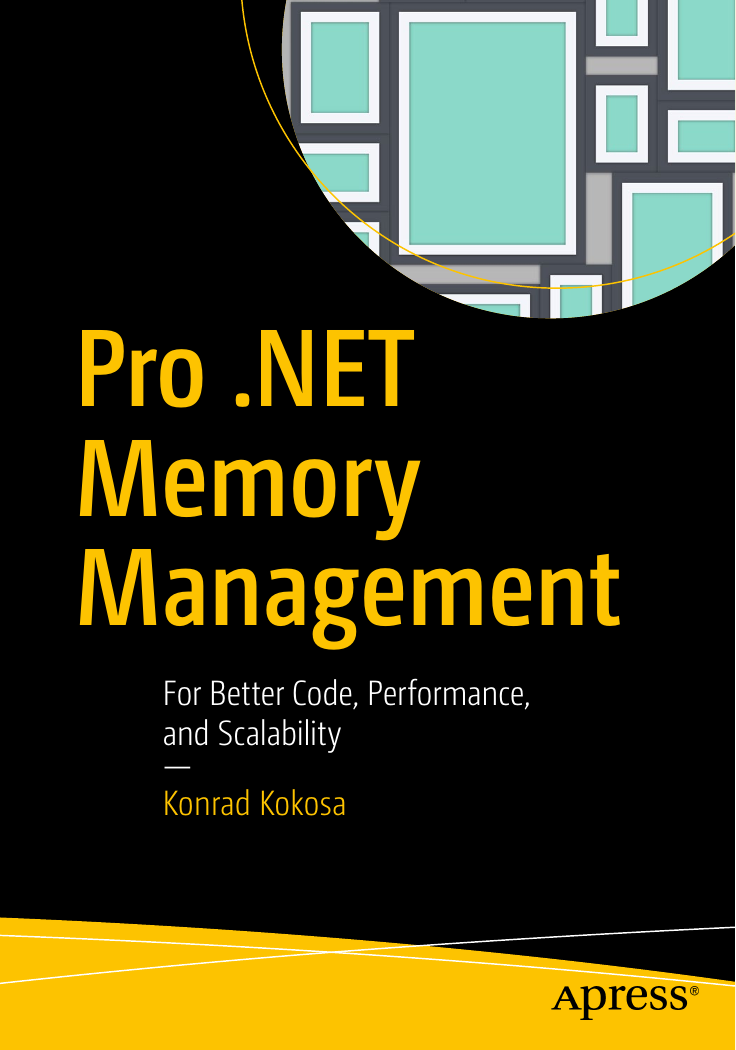

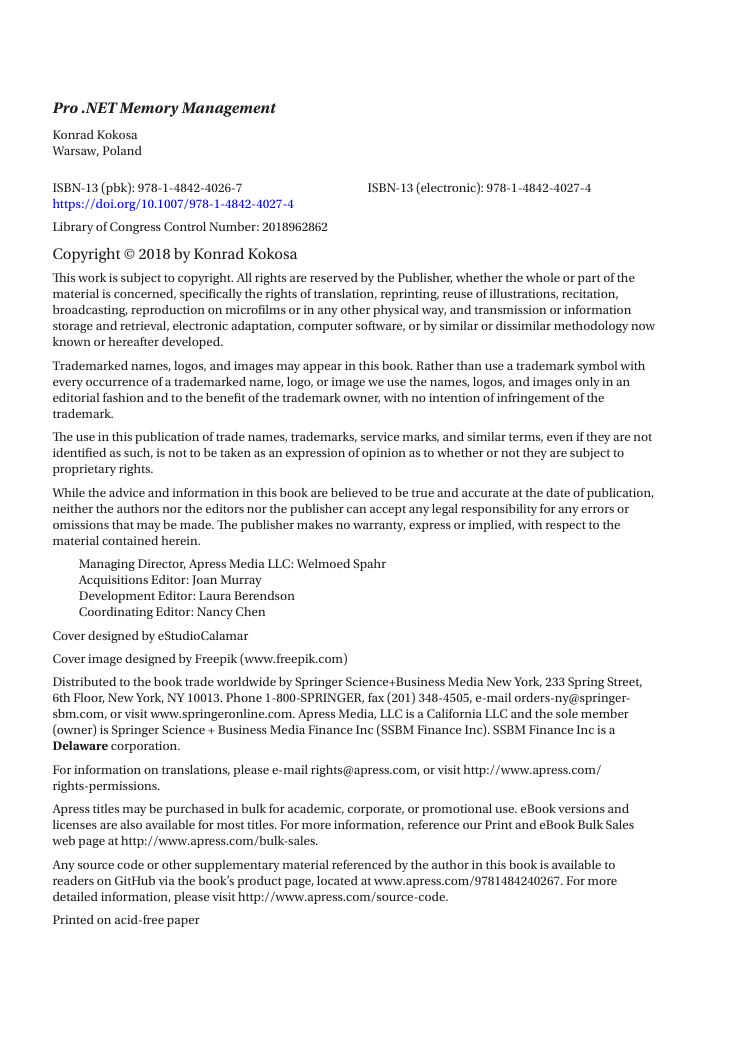

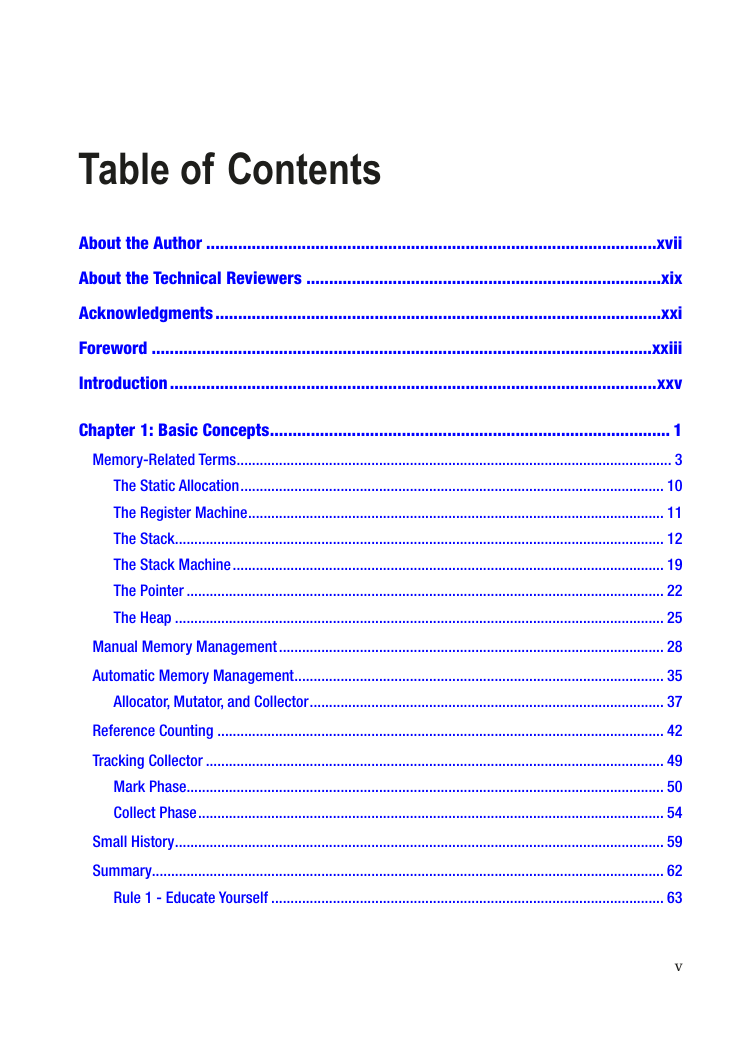
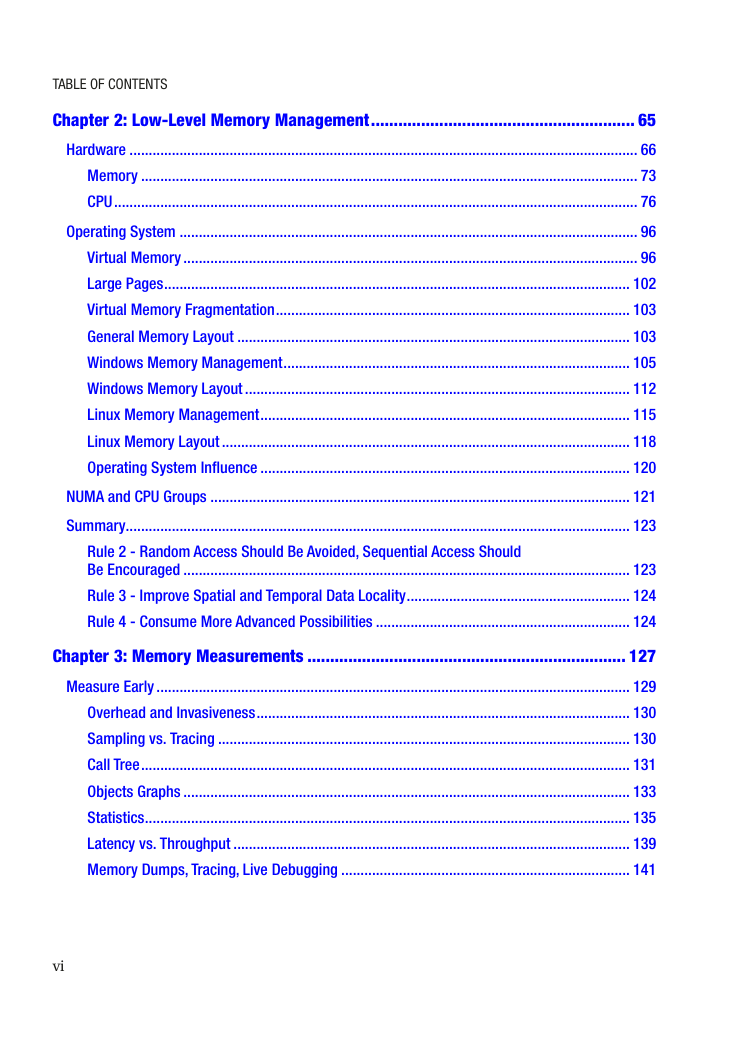
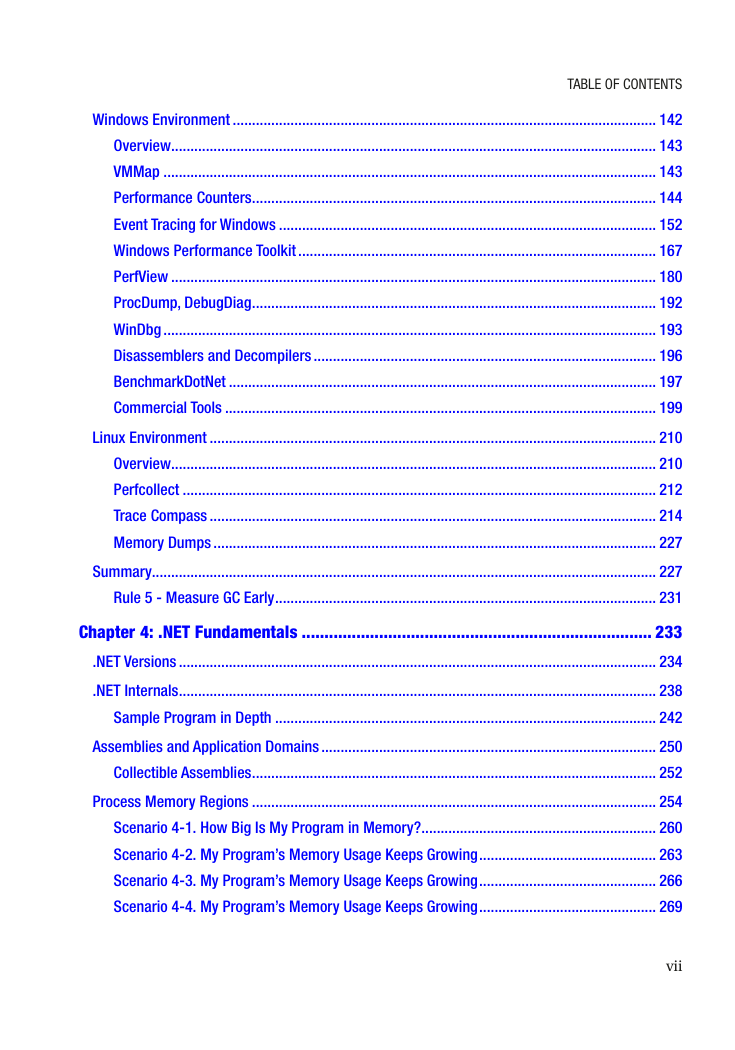









 2023年江西萍乡中考道德与法治真题及答案.doc
2023年江西萍乡中考道德与法治真题及答案.doc 2012年重庆南川中考生物真题及答案.doc
2012年重庆南川中考生物真题及答案.doc 2013年江西师范大学地理学综合及文艺理论基础考研真题.doc
2013年江西师范大学地理学综合及文艺理论基础考研真题.doc 2020年四川甘孜小升初语文真题及答案I卷.doc
2020年四川甘孜小升初语文真题及答案I卷.doc 2020年注册岩土工程师专业基础考试真题及答案.doc
2020年注册岩土工程师专业基础考试真题及答案.doc 2023-2024学年福建省厦门市九年级上学期数学月考试题及答案.doc
2023-2024学年福建省厦门市九年级上学期数学月考试题及答案.doc 2021-2022学年辽宁省沈阳市大东区九年级上学期语文期末试题及答案.doc
2021-2022学年辽宁省沈阳市大东区九年级上学期语文期末试题及答案.doc 2022-2023学年北京东城区初三第一学期物理期末试卷及答案.doc
2022-2023学年北京东城区初三第一学期物理期末试卷及答案.doc 2018上半年江西教师资格初中地理学科知识与教学能力真题及答案.doc
2018上半年江西教师资格初中地理学科知识与教学能力真题及答案.doc 2012年河北国家公务员申论考试真题及答案-省级.doc
2012年河北国家公务员申论考试真题及答案-省级.doc 2020-2021学年江苏省扬州市江都区邵樊片九年级上学期数学第一次质量检测试题及答案.doc
2020-2021学年江苏省扬州市江都区邵樊片九年级上学期数学第一次质量检测试题及答案.doc 2022下半年黑龙江教师资格证中学综合素质真题及答案.doc
2022下半年黑龙江教师资格证中学综合素质真题及答案.doc